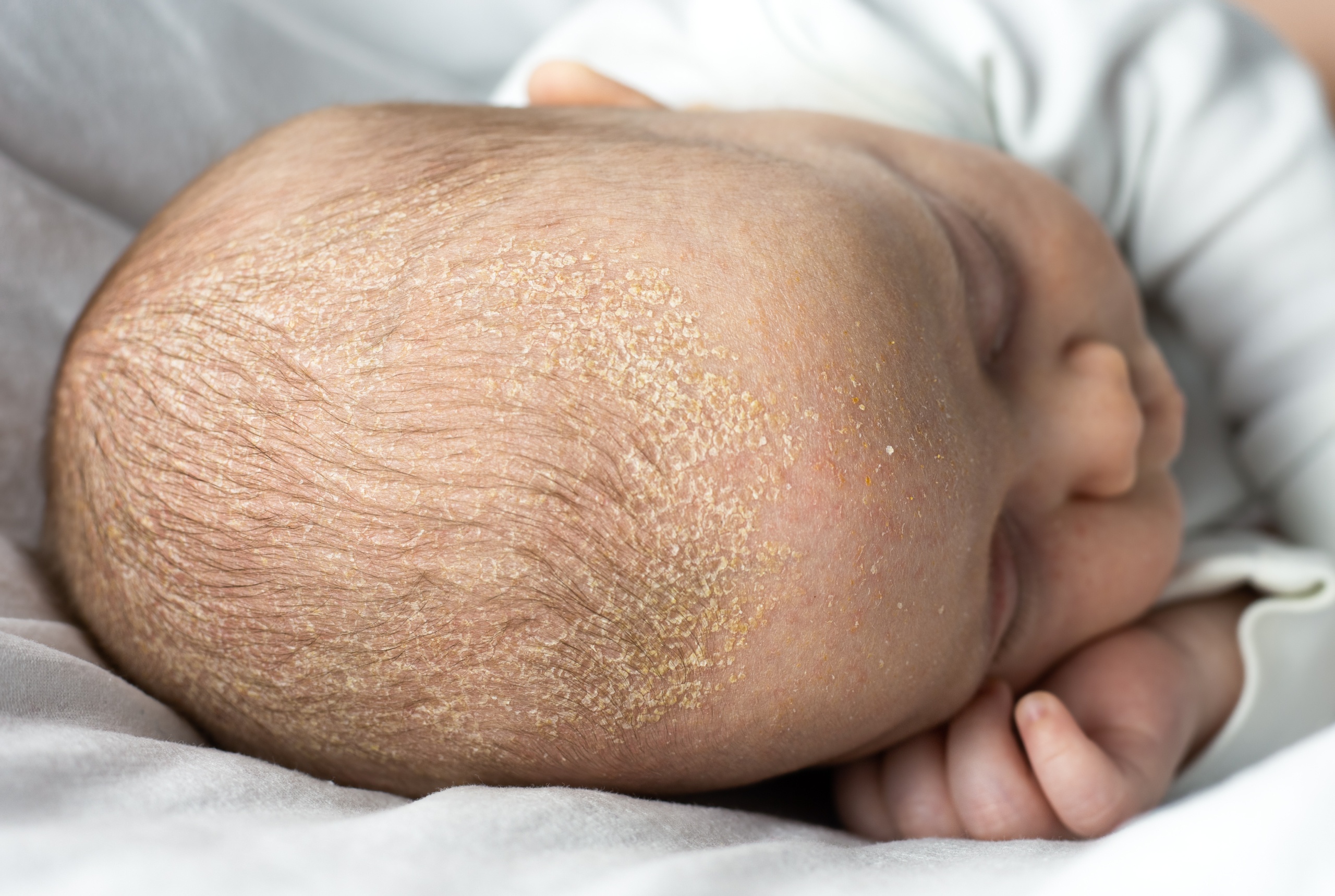Causes of Cradle Cap in Babies
Cradle cap is a common skin condition that impacts nearly 70% of babies by three-months old. The flaking, scaling, and peeling skin on affected areas can be worrisome for parents.
Cradle cap, or seborrheic dermatitis, is most common on the scalp and can also affect the skin around the torso, face, and diapering area. It can easily be treated.
What Causes Cradle Cap?
Cradle cap dermatitis is believed to be the result of hormones passed on from the mother during pregnancy and birth. It will usually resolve on its own by the time a child is a year old, although some children age 1-2 continue to experience this condition.
Dermatitis is not contagious, nor is it a result of poor hygiene or neglect. Babies can’t get cradle cap from other babies and they can’t pass it on to others.
Managing Cradle Cap
Areas affected by cradle cap can be red, flaky and dry. If it appears swollen, contact your child’s doctor.
You can reduce the severity of the condition with regular hair washings, and a gentle scalp massage with a delicate brush. This should serve to loosen the flakes and scales, revealing the healthy skin underneath.
Make sure that you always use baby-approved products on the gentle skin of your child. Adult shampoos, lotions, and oils can be harsh and irritating to your baby’s skin.
Helpful Tips
- Assess the changes in your baby’s skin daily
- Use a gentle shampoo and soft brush to massage and exfoliate the scalp
- For other areas of the body, it may be easier to soak in a tub while gently rubbing the skin
- Discuss any concerns with your child’s doctor


